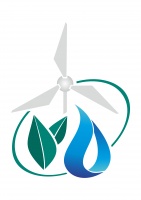Сбор поверхностного стока и экономия воды для развития огородничества и фруктового садоводства с целью предотвращения деградации пастбищ
| Заголовок | Сбор поверхностного стока и экономия воды для развития огородничества и фруктового садоводства с целью предотвращения деградации пастбищ |
|---|---|
| Категория инструментов | Система повышения водообеспеченности |
| Сфера использования практики |
|
| Пригодность практики для адаптации к изменению климата | Высокая |
| Кем реализована практика | Министерство охраны природы Туркменистана и Общество по техническому развитию Германии |
| Где использована практика |
Страна: Туркменистан Область: Ахалская |
| Специфика местности |
Расположено в юго-западной части Центрального Копетдага, горная агро-экологическая зона, ближе к границе с Ираном. Численность региона - около 12.000 человек, население занимается агро-животноводством, регион простирается на более чем 9.000 га, естественные можжевеловые леса |
| Когда использована практика |
Дата начала: 01.01.2009 Дата окончания: 31.12.2010 |
| Проблема, которая решается применением практики |
Естественные можжевеловые леса вырублены для отопления. Проблема нехватки воды связана с низким уровнем осадков. Как правило, сельские жители собирают сток, идущий со склонов гор и заполняют в специально построенные резервуары, называемые «гоуданами». В благоприятные годы гоуданы сохраняют достаточное количество воды для орошения полей в течение одного сезона. Однако, за последние 5 – 6 лет гоуданы не заполнялись из-за недостаточного количества осадков. Обезлесенные склоны не в состоянии удержать дождевую воду по причине быстрого стока. По причине дефицита воды население постепенно забрасывает сельское хозяйство и садоводство и переходит исключительно на животноводство. В результате чрезмерного использования пастбищных земель, фуражные корма на вытоптанной земле не вырастают, что ведет к дальнейшей эрозии склонов холмов |
| Примененные в практике инструменты |
Комплекс мер для сбора поверхностного стока воды на склоновых землях (сооружение ряда небольших дамб; капельное орошение; рассаживание можжевельника) |
| Описание практики и ее результаты |
Мероприятия: • На расчищенных склонах были сооружены ряд небольших дамб, чтобы увеличить просачивание дождевой воды в почву (краткосрочное решение). Дамбы, сооруженные в ущельях, удерживают водные потоки, формируемые во время сильных дождей, увеличивая содержание влаги в почве, что способствует восстановлению растительности; Результаты: • построено 17 плотин различного размера для предотвращения эрозии почвы; |
| Какие уроки и рекомендации можно извлечь из практики |
Уроки: Улучшенные методы сбора поверхностного стока и экономии воды необходимы для облегчения растущей нехватки воды, чтобы сообщества смогли вернуться к занятию сельским хозяйством, сделали скотоводство более устойчивым. Они необходимы и для того, чтобы остановить растущую деградацию склонов гор. Рекомендации: Технологии, которые предстоит применить в дальнейшем: |
| Источник практики |
Отечественные инструменты (результат разработок отечественных научно-исследовательских структур) |
| Краткая информация о проекте |
Название: «Создание потенциала и инвестиции на местном уровне для устойчивого управления земельными ресурсами». |
| Источник финансирования практики | ПРООН и Глобальный экологический фонд |
| Источники информации о практике | |
| Дата заполнения | 22.08.2017 |
| Распечатать Сравнить с другой практикой |




